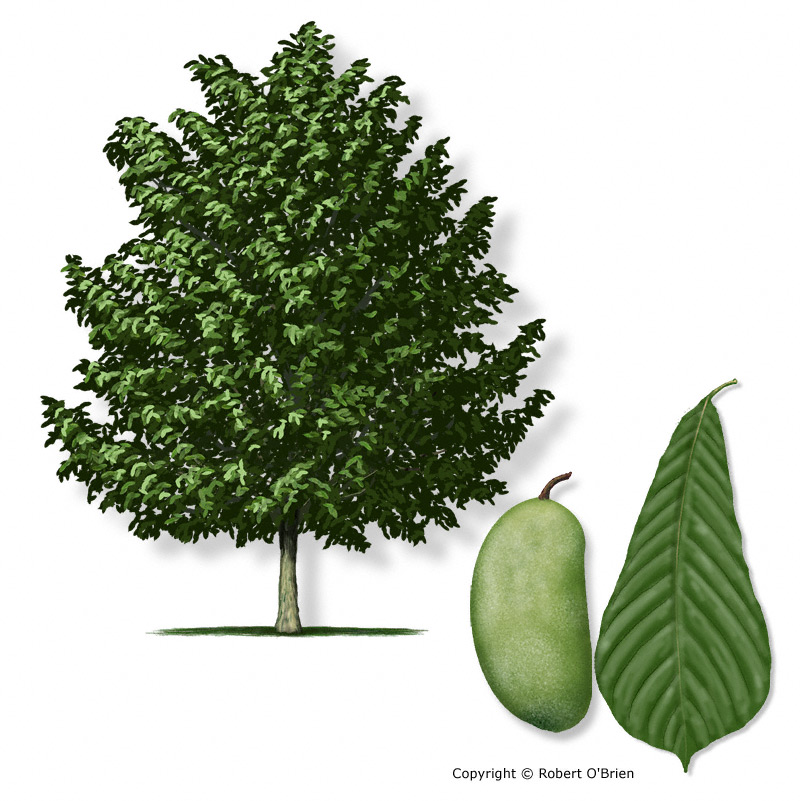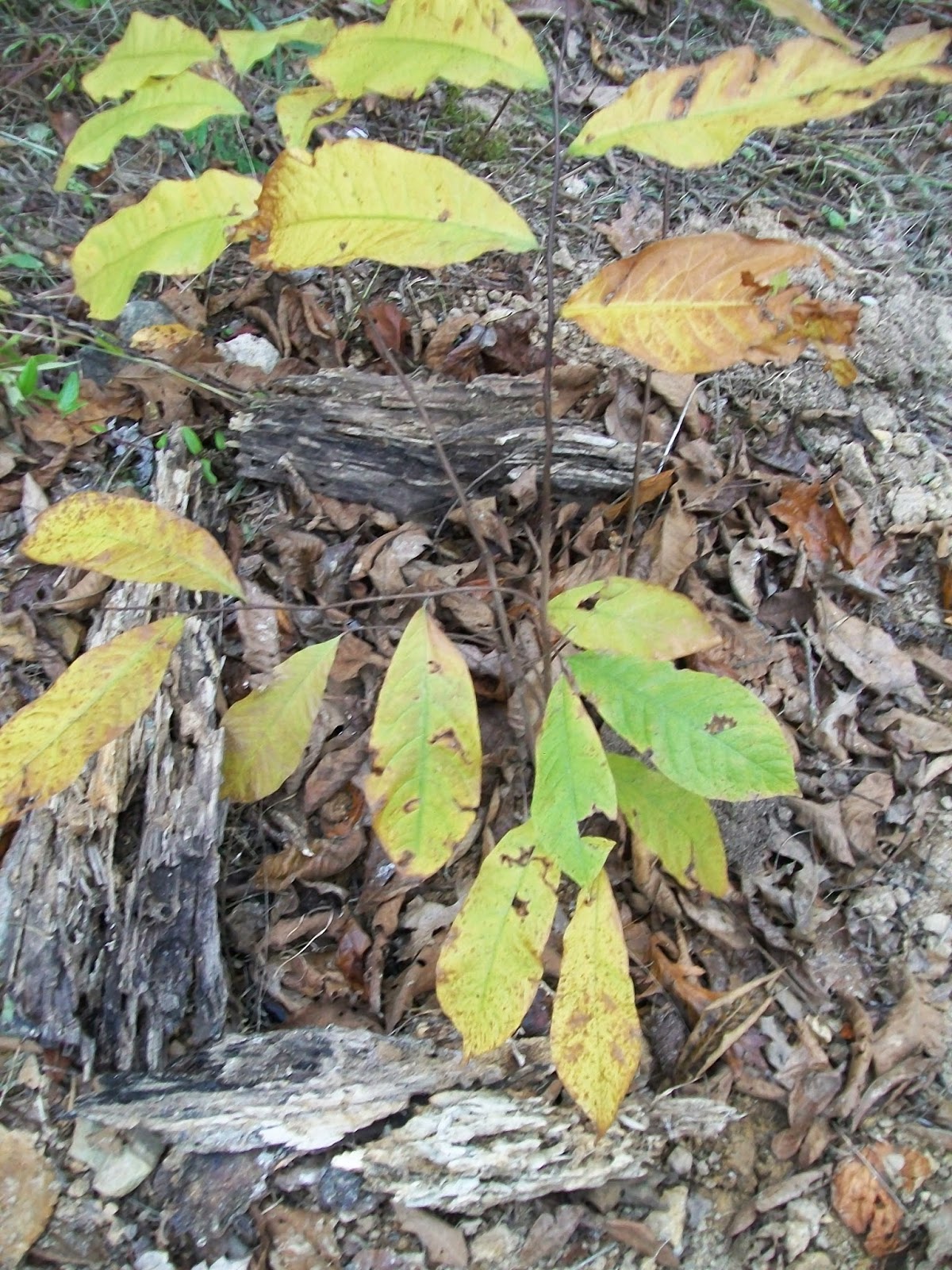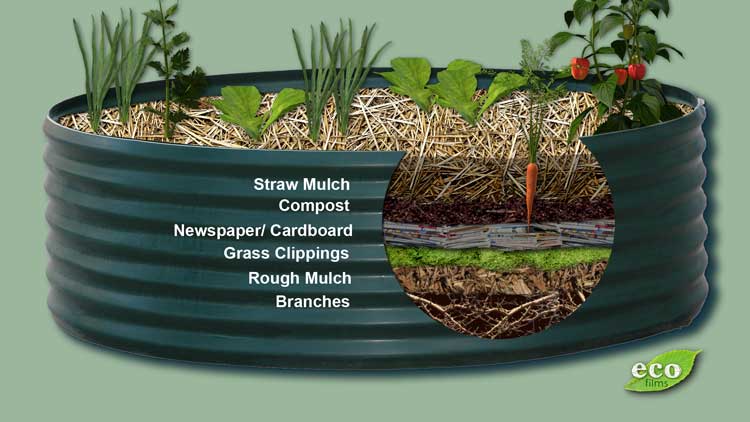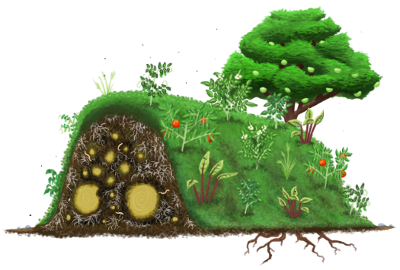 |
 |
| "tomato from compost pile" |
I don't remember why I transplanted the Jalapeno pepper to a Container (in the photo below), but obviously in a medium-sized container, at least one pepper plant can flourish and produce many peppers for months!
 |
| Jalapeno pepper plant (2013) |
When you purchase fruits and vegetables from the farmer's market or grocery store, you will be able to save seed, cuttings, or roots from your foods to re-plant. Celery, radishes, onions, potatoes, lettuce, and even pineapple scraps can be grown from the parts you would usually discard into the compost. And of course all of these foods can be grown in containers! Surprisingly, potatoes can be grown in a small confined space.
There are a plethora of container gardening systems and designs. Last week I posted a video on Growing Food in small raised beds from OneYardRevolution: How to grow food in a small space. In a much older blog post, I made little effort in demonstrating ways of growing food in limited spaces, thus I wanted to revisit container gardening in more detail now. In the older post, I mentioned using Terrariums, Vertical structures, and Containers to grow food in temporary living situations, which you can see here: Three ways to grow food & Other plants for Apart Dwellers (Indoors/Outdoors).
 |
| Mike Lieberman of Urban Organic Gardener |
Many apartment dwellers grow food on a patio, along the steps, or inside the home next to a South-facing window. Mike Lieberman was a great example of Urban gardening, as he grew his vegetables on his NYC fire escape. He has many YT videos on how to grow food in buckets, pop bottles, and other great apartment gardening tips. His most popular YT videos included: How To Make A Self-Watering Container Using 2 Container, and a tour of his Urban Gardening in Small Spaces.
Some of the most impressive Vertical/Micro gardening methods include hydroponic and aeroponics systems. In the video below, a Wisconsin couple grow vibrant and healthy tomatoes, peppers, and cucumbers, in the Winter time using containers and aeroponic systems. The Wisconsin couple prove it is possible to grow vibrant plants in a limited space with small containers-- even in the Winter, and without soil! The couple's main focus is providing light, and a mist mixed with a mineral-rich solution. And you can completely run your system off of rain water collected:
I also believe we can grow an impressive amount of food using free, re-purposed, and recycled materials, like 5-gallon buckets or Pop bottles like Mike Lieberman's garden. The Pop bottles function like a slow drip irrigation system, and a Frost protector when starting vegetables outdoors early in the year. What's also great about collecting pop bottles, is you can make some impressive greenhouses and even homes using Pop bottles, see here: Construct a greenhouse using Free Supplies.
The following two photos are snapshots taken from Desertification video, which I posted here at Reuse trash for Container Gardening.
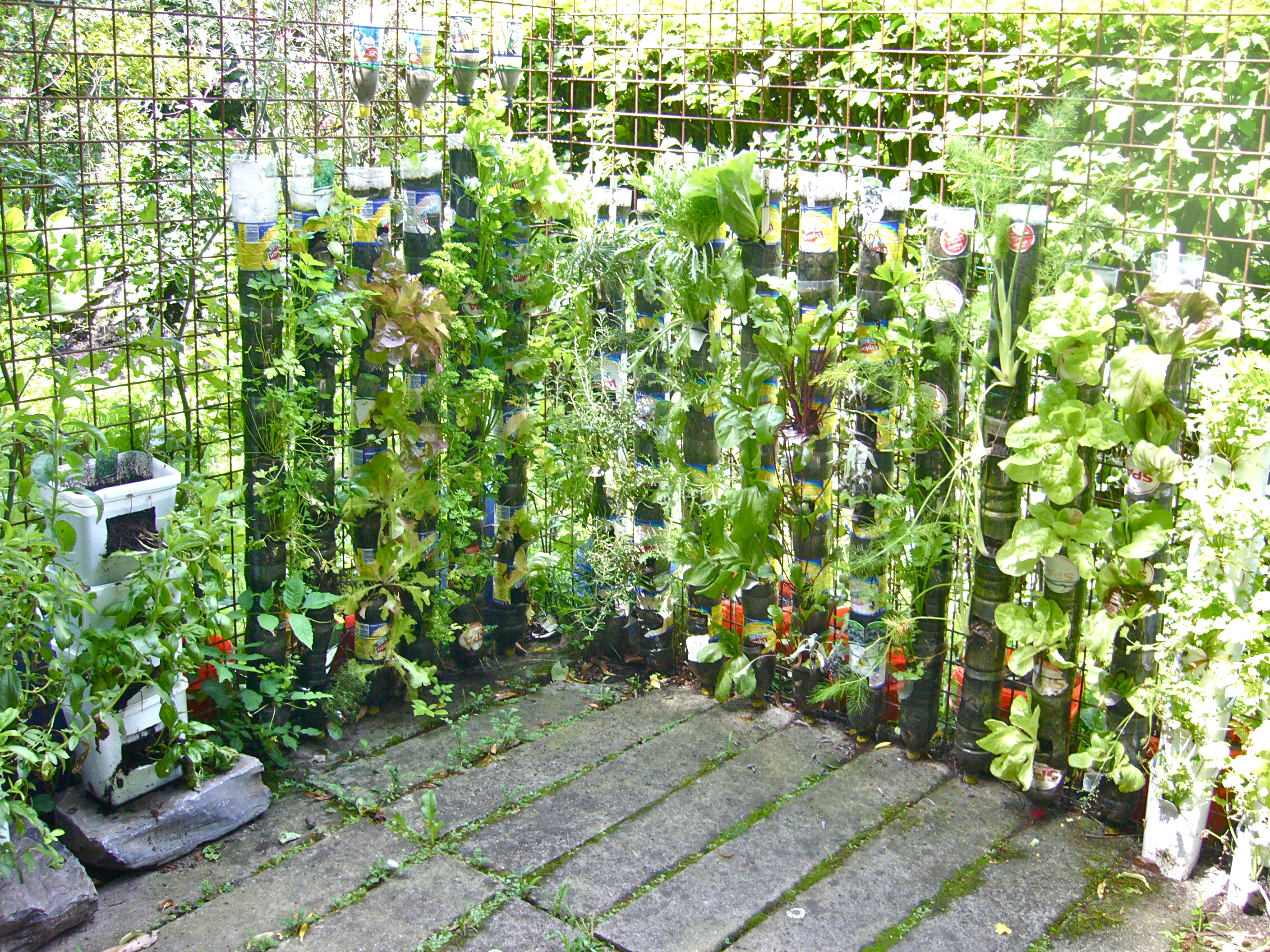 |
| photo source: desertification |
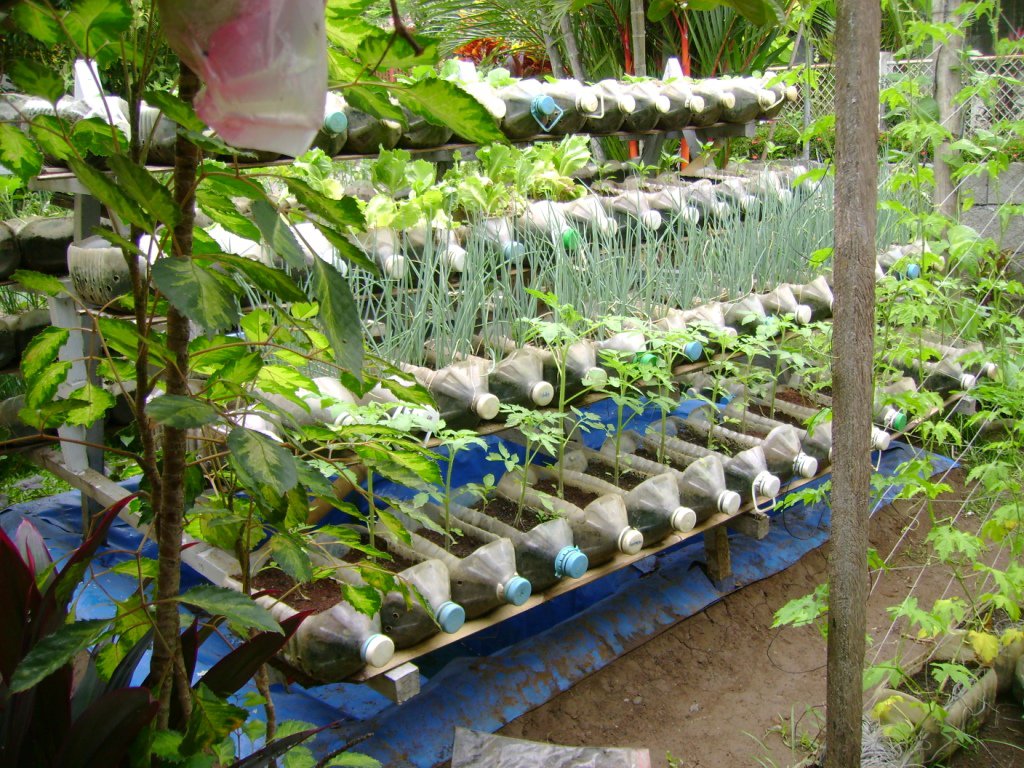 |
| photo source: desertification |
 |
| photo source: Useful trash |
Many herbs and greens can be grown in a small container indoors, even in the snowy Winter months. Containers as small as Pop bottles can be used for starting plants indoors several weeks before the Last Frost date. After a month or so of growth, you can transplant your starters in large containers, like 5 gallon buckets or other recycled growing containers.
Mentioned earlier, I found 5-gallon buckets in the wood once, and several alongside the road, so I know you can find a collection of buckets for free or inexpensive. I have also seen some very impressive craftsmanship and creativity when growing in 5-gallon buckets.
When growing outside of the apartment or indoors, Vertical Gardens seem to be most useful and efficient way to utilize your space. In the older post I mentioned Vertical Gardens using Wood Pallets. Wood Pallets can be collected for free at many store locations. Pallets don't have to be disassembled to reconstruct into a raised bed, but you can simply staple plastic on the back of the pallet, add dirt in between the holes, and plant. The following pictures below are good examples of using Vertical gardening space.
 |
| wood pallet photo: emerald+ella blog |
 |
| photo source: fivegallonideas.com |
 |
| photo: Community gardening blog |
So far I have shown you how to grow in Containers outdoors, but I want to show you indoor methods of Gardening in Containers. Because you're growing indoors, you can control the temperature and moisture of the plants, and prevents bugs from eating the plants.
No need for rain barrels when growing indoors! Collect water from the dishes you wash, or even collect water when you're taking a shower. Even sitting out a bowl, glass, or some container outside will collect rain for you to water your plants.
The picture below is a great example of making use of Vertical Garden space Indoors.
 |
| photo: Living Apartment |
 |
| Pintrest |
Because growing Fruit trees is my main goal, I am intrigued by those Gardeners that have many varieties of Fruit growing in large containers. Below are some of the photos I found that demonstrates you can grow small to large Fruit trees in small to large containers. I highly recommend researching the Dwarf variety Fruit trees as these are best suited for limited spacing conditions.
 |
| Pomegranate photo: A Kitchen Garden in Kihei Maui |
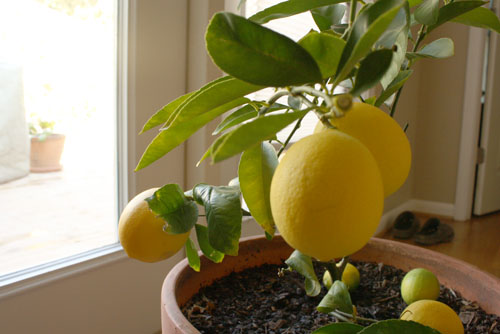 |
| photo: Eat Drink Better |
 |
| Photo: the Micro Gardener |
 |
| Dwarf mango photo: Daleys Fruit tree blog |
 |
| Photo: The Lettuce Farm |
Don't rush out to your nursery to purchase exotic fruit trees just yet! Locate a few large containers, and begin filling the containers with food scraps (compost) and add leaves, or other wood debris to the containers. Over a few months time the compost and mulch will decompose into nutrient-dense soil. Now that you have your containers filled with the adequate soil, it is time to transplant some Fruit trees!
All fruit trees and bushes have specific soil needs and conditions, so do some research beforehand. For example, Apples, Pears, Blueberry bushes prefer a soil pH between 6.0 and 6.5 (acidic soil), while Apricots and Oranges prefer a soil pH above 7 (alkaline soil). Fortunately many Tropical fruit trees tolerate acidic clay soil. Of course it's not just the specific pH of the soil. Fruit varieties have specific watering and sunlight needs.
Seeing these Tropical fruits growing in Containers gets me excited to do the same. I could buy (or find) a 20 gallon pot, fill the pot with compost, leaves, and other mulch materials, then cut the top off of a Pineapple and plant it in the pot of soil. After a couple of years, the Pineapple fruit will look similar to the one in the picture above.
Container gardening does not have to be limiting. Although you may feel limited in the amount of space you have outside or inside your apartment; and although you may not be able to have a permanent garden, gardening in containers creates endless possibilities. Take your freedom back, and plant a garden anywhere! Expand your gardening skills outside of your apartment or Rental home by Starting a community garden, or Ask your Parks and Recreation department if you can plant fruit trees within the Park. This will encourage others to donate fruit trees, and possibly provide homeless peoples with free food.


